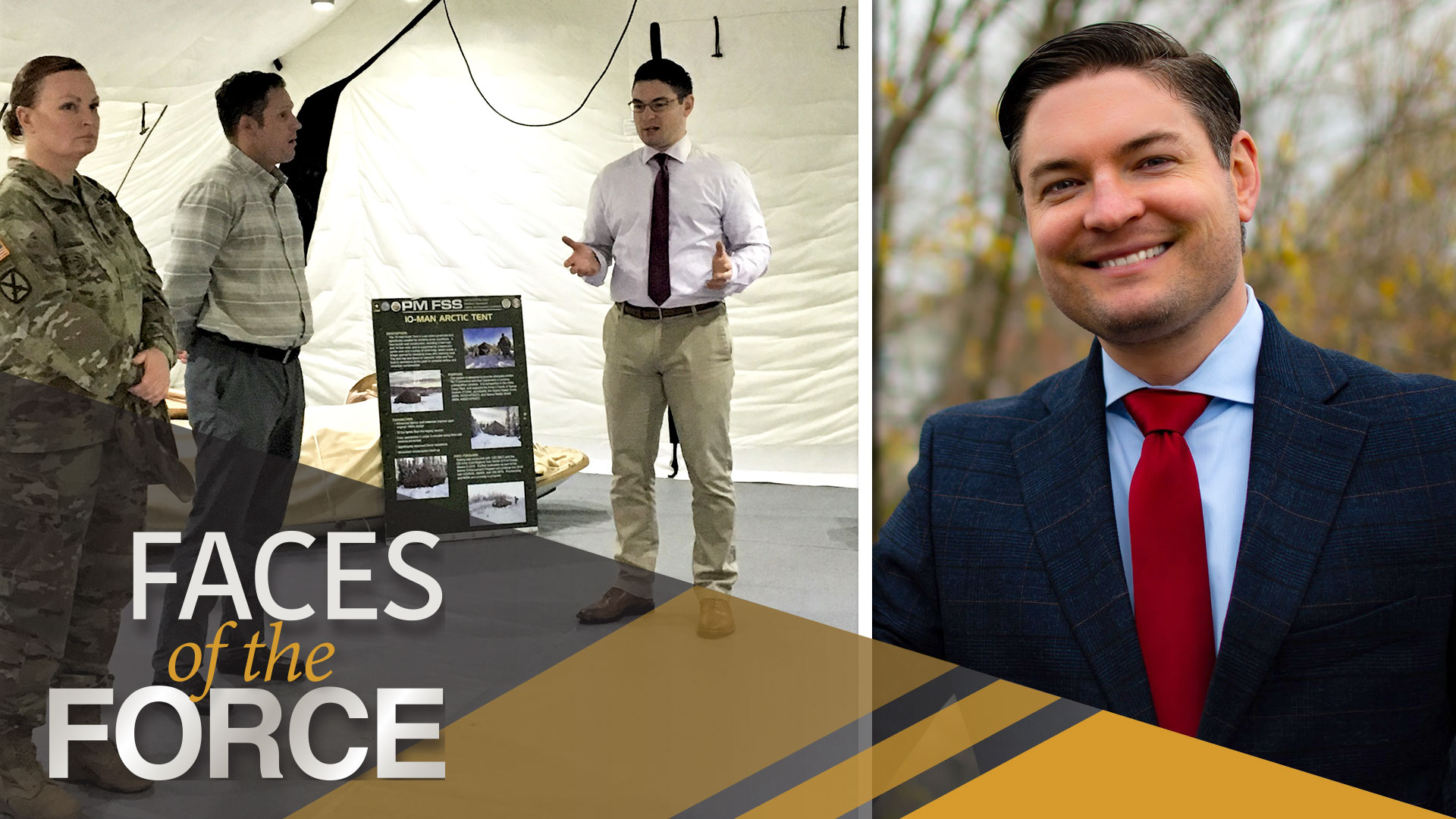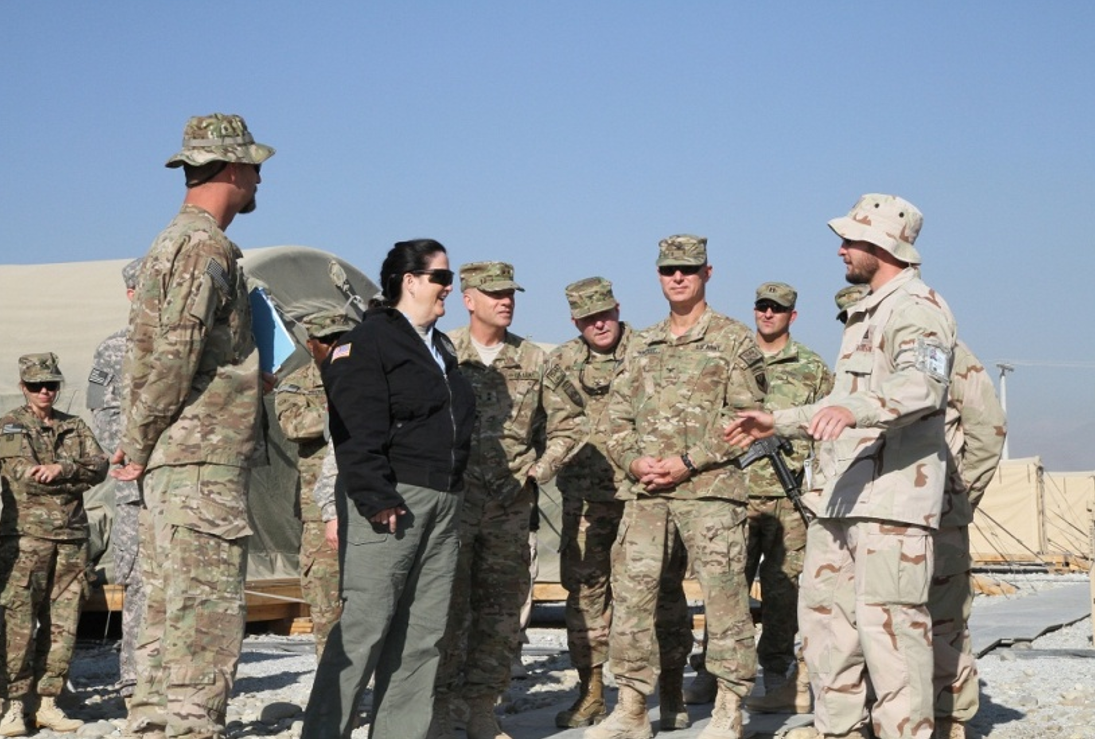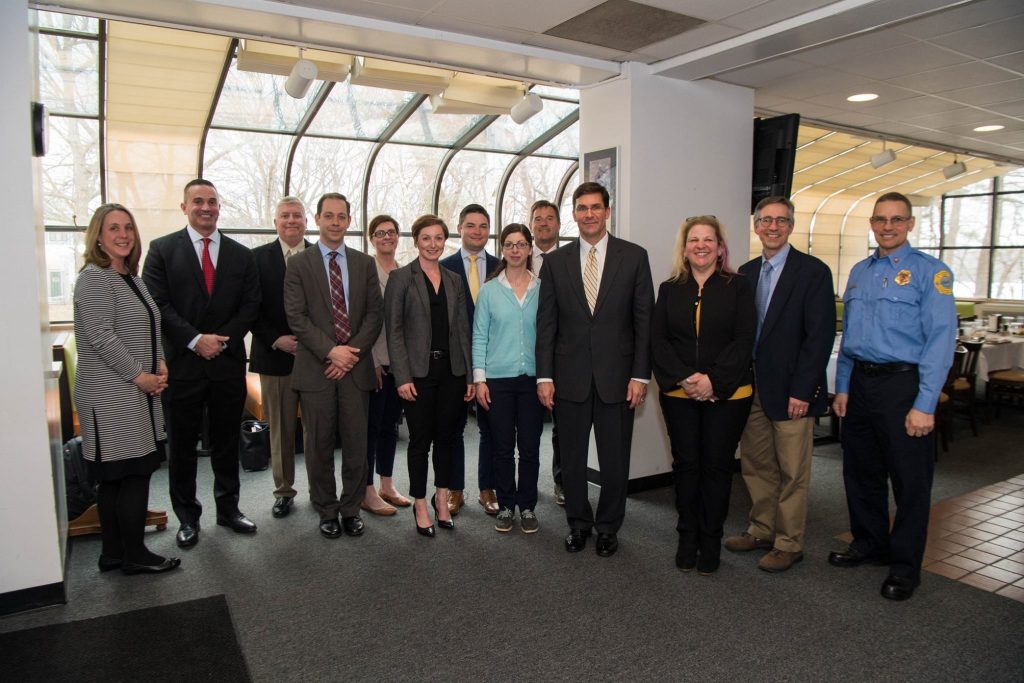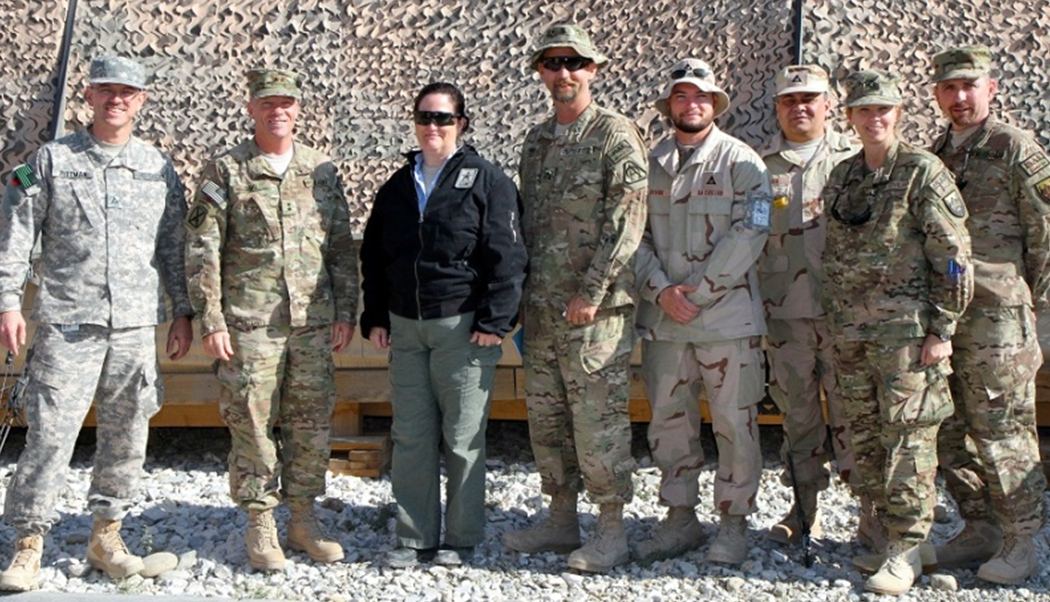
COMMAND/ORGANIZATION: Product Manager for Force Sustainment Systems, Program Executive Office for Combat Support and Combat Service Support
TITLE: Assistant Product Manager for Shelter Systems
ACQUISITION CAREER FIELD: Program Management
YEARS OF SERVICE IN WORKFORCE: 15 years
AAW/DAWIA CERTIFICATIONS: Level III in program management and engineering
EDUCATION: M.S. in systems engineering and project management, Worcester Polytechnic Institute, Massachusetts; B.S. in engineering, Roger Williams University, Rhode Island
AWARDS: Detroit Federal Executive Board public service recognition, Project Manager Expeditionary Energy and Sustainment Systems Golden Shield, 10-Year Federal Career Service Award, Department of the Army Civilian Service Achievement Medal
HOMETOWN: Sandwich, Massachusetts
Ryan Devine
by Ellen Summey
Ryan Devine is nothing if not an engineer. “I lean heavily towards the logical, analytical, left-brained way of thinking,” he said. A self-professed nerd and a natural problem-solver, he took an indirect path to the Army Acquisition Workforce (AAW), first working in research and development for the Army. It all began with his undergraduate engineering capstone project, when he was part of a team to design an automated inflatable bumper system to protect the hull of a high-speed Navy vessel during docking. “I seriously doubt that design was ever used,” he joked, “but it was a fascinating project.” At a career fair that spring, his fate was sealed.
“On a whim, I dropped a résumé at the NSRDEC [Natick Soldier Research Development and Engineering Center in Natick, Massachusetts, now the Combat Capabilities Development Command Soldier Center] table,” he said. The center, which had also sponsored his capstone project, called him for an interview. When he was eventually offered the job, “I immediately accepted,” Devine recalled. “Working for an organization as expansive as the Department of Defense, with responsibilities that could fluctuate and stay fresh and exciting, made the position really appealing.”
In fact, he was hooked. Applying his engineering skills and natural curiosity to solve military problems turned out to be a great fit for Devine. Twelve years later, as he prepared to take on his current position as assistant product manager (APM) for Shelter Systems within the Product Manager for Force Sustainment Systems (PM FSS), he was apprehensive about the change from research and development to the broader world of acquisition. “Probably the most important point in my career with the Army was when I accepted my current position,” he said. And despite his early concerns about the transition, “I’ve found my engineering background and way of thinking have been nothing but helpful in my acquisition career.”

Devine briefs Honorable Ms. Katherine Hammack, Assistant Secretary of the Army for Installations, Energy and Environment, while on assignment managing an energy efficient base camp in Afghanistan in 2012. (U.S. Army photo courtesy of PM FSS)
Today, Devine is solving problems on a larger scale. His new home, PM FSS, falls under the Project Manager for Expeditionary Energy and Sustainment Systems, which is a part of the Program Executive Office for Combat Support and Combat Service Support (PEO CS&CSS). “FSS is responsible for a broad and diverse portfolio of equipment ranging from shelter systems to environmental control systems to tactical camouflage systems,” he explained. “As the APM for Shelter Systems, I manage specifically that portion of the portfolio: soft wall shelters, rigid wall shelters, vehicle-mounted shelters and a variety of products that can be integrated into shelters” (for example, insulation or electromagnetic spectrum shielding).
Shelter is one of the most basic human needs. And as engineers predictably do, Devine has begun looking for ways he can improve both the products themselves and the processes used to manage, procure and sustain them. “In the spirit of process improvement, I have created some tools for FSS personnel to use to make their jobs easier,” he said. One such tool, which he designed to streamline and partially automate the management of FSS fleet data, was recently adopted for more widespread use across PEO CS&CSS.
“In engineering, I could stay hyper focused on a single task,” he said. Working as an APM, however, he’s forced to take a more holistic view. “It was a gigantic shift in perspective,” he recalled. “I still think like an engineer, though. … In my work now, these traits are still to my benefit.” Meticulous attention to detail, system-level thinking and process improvement are cornerstones of Devine’s approach to work. In fact, he was surprised and concerned by the lack of standardization in shelter products currently in use across the Army.
With a vast and easily accessible array of shelters available to Soldiers today, it’s no wonder. Soldiers need shelters. They can be purchased easily from a variety of sources. That makes total sense. The story gets more complicated, though, when a shelter needs maintenance, or when it needs to be transported to a new location. “What we in the PM world think of as ‘standard’—in other words, tested, safe, transportable and sustainable—is not necessarily the standard for everyone else,” Devine said.

Ryan Devine, seventh from left, was among a group of Army civilian employees selected to have lunch with then-Secretary of the Army Mark T. Esper during his visit to PM FSS on March 15, 2019. (U.S. Army photo by Staff Sgt. Brandy Nicole Mejia)
“Soldiers across the Army have a wide variety of types of shelters, and it’s all by virtue of the way they were purchased,” he continued. “We need to reset and look at that issue from a total life cycle perspective.” If a unit procures a standard Army shelter, and it needs maintenance, then the Army offers sustainment support to get it fixed. “If they bought something nonstandard,” though, “they’re at the whim of the vendor, who may charge sizable fees for repairs, support, etc.”
So, how might an engineer approach this sort of problem? “That … motivated me to spearhead a comprehensive strategy to improve standardization across Army shelters. Over the last year, I have developed the strategy and gained leadership endorsement on the approach.” He hopes that as the strategy evolves, it demonstrates the value of standardization across this and other similar product types. An engineer through and through.
One difficulty Devine is still learning to tackle is a facet of human nature. “There is a tendency to resist change,” he said. “My biggest challenge is making process improvements that stick.” He has learned to start small. “Make moderate improvements. Start with small changes and demonstrate the benefit.”
What would he do if he were crowned king of acquisition for a day? “I’d want to make it easier for good ideas to flourish and see quicker and wider implementation,” he said. “This line of work is by nature bureaucratic and process-based, which can sometimes stifle good ideas.” Given the chance, he would change that paradigm. “I think it would have to start with greater access. People at the working level would need access to leaders and decision-makers. If that access were there, and the ideas were good, I think leaders would listen and be willing to give new things a try.” He shares similar advice with his peers in acquisition. “Most often, I suggest that there is nothing to be gained in government by withholding information from your colleagues. Denying access to information creates lasting impediments to productivity and efficiency that can be difficult to overcome.”

Devine briefs Honorable Ms. Katherine Hammack, assistant secretary of the Army for installations, energy and environment, while on assignment managing an energy-efficient base camp in Afghanistan in 2012. (U.S. Army photo courtesy of PM FSS)
If Devine sounds like a man who has embraced his “nerd” status, he won’t disagree with you. “The most important lesson I’ve learned—both on and off the job—is that it’s OK to be unique,” he said. “We are all different in how we absorb, process and dispense information. … When a person comes to appreciate and embrace those differences instead of diminishing them, he or she really begins to flourish in both personal and professional life.”
Embracing a diversity of viewpoints, personalities and skills, Devine relishes his work. “This position is truly satisfying because FSS has the singular focus of improving a Soldier’s daily life,” he said. “The products we manage enable safe, seamless, effective execution while on-mission; and off-mission, they improve health, welfare and quality of life. Products like ours often go unnoticed and underappreciated, but the positive impact they can have on a Soldier’s life and duties is massive.”
“Faces of the Force” is an online series highlighting members of the Army Acquisition Workforce through the power of individual stories. Profiles are produced by the U.S. Army Acquisition Support Center Communication and Support Branch, working closely with public affairs officers to feature Soldiers and civilians serving in various AL&T disciplines. For more information, or to nominate someone, please go to https://asc.army.mil/web/publications/army-alt-submissions/.
Subscribe to Army AL&T News – the premier online news source for the Army Acquisition Workforce.
![]() Subscribe
Subscribe







